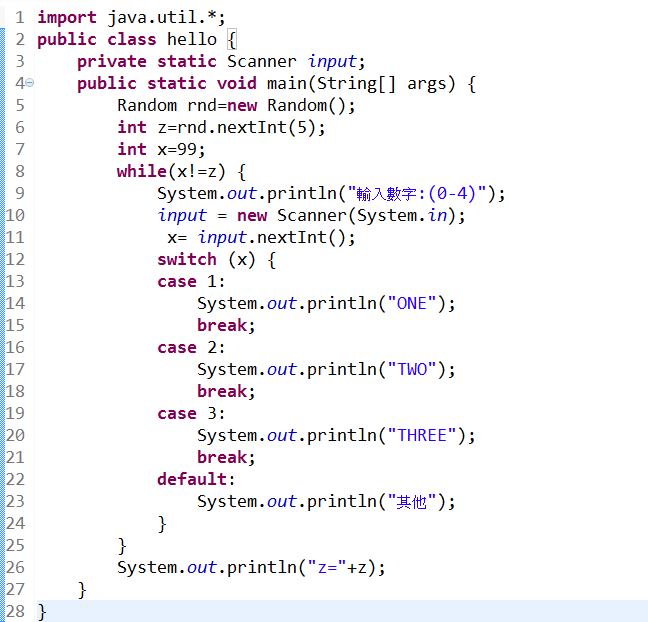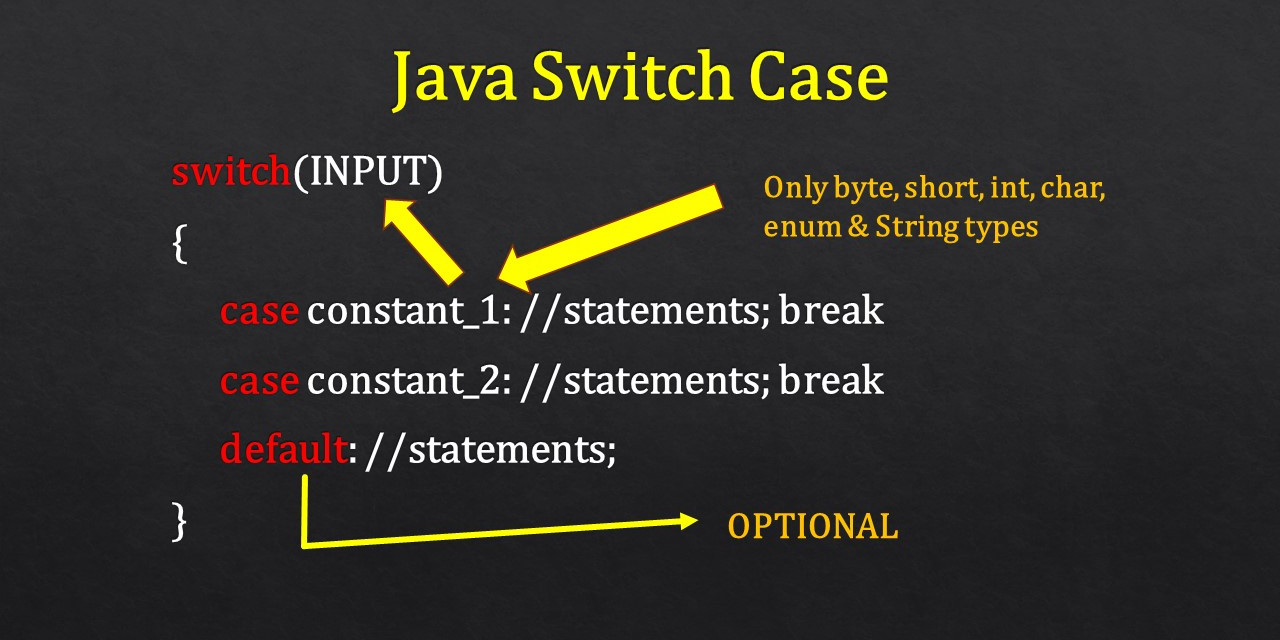
The case value can have a default label which is optional.If a break statement is not found, it executes the next case. When control reaches to the break statement, it jumps the control after the switch expression. Each case statement can have a break statement which is optional.The Java switch expression must be of byte, short, int, long (with its Wrapper type), enums and string.In case of duplicate value, it renders compile-time error. The case value must be literal or constant. The case value must be of switch expression type only.There can be one or N number of case values for a switch expression.In other words, the switch statement tests the equality of a variable against multiple values. Since Java 7, you can use strings in the switch statement. A situation came up where I had to check for keyboard events and I wanted to include WASD as well as the arrow keys. The switch statement works with byte, short, int, long, enum types, String and some wrapper types like Byte, Short, Int, and Long. Write an if.else statement with a switch statement in JavaScript. if (obj.The Java switch statement executes one statement from multiple conditions. JavaScript Switch Statement - Condition in Case. Dans lexemple suivant, si lexpression expr vaut 'Bananes', le programme trouve la correspondance et exécute linstruction associée. Make sure to use `hasOwnProperty()` if you're using an object, // otherwise 'constructor' would be a valid `hero`. Strict equality means two dates aren't equal unless they're // the same object reference.ĭate = independenceDay // false // `date` is an object, so you need to make sure you convert the // date to a number using `getTime()`. Is functionally equivalent to the first example: const hero = 'Batman' īecause the switch statement uses strict equality, you're responsibleįor doing type conversions if you want to compare objects, like dates It against each case expression using strict equality. The switch statement evaluates the given expression once, and compares
#Java script switch code
They execute the same code block as the 'Bluebird' // case.

The 'Robin' and 'Nightwing' cases are "fallthrough" `case` // statements. For example: const sidekick = 'Nightwing' You can execute one blockįor multiple case statements. When the prompt box pops up, we have to click 'OK' or 'Cancel' to proceed.

It can be written without using the window prefix.

It is generally used to take the input from the user before entering the page.

There are some benefits to this behavior. The prompt () method in JavaScript is used to display a prompt box that prompts the user for the input. JavaScript executed both the 'Batman' and 'Aquaman' blocks, // so you get the wrong `sidekick`. Unless there's a `break`, JavaScript will execute the next // `case` block. JavaScript will "fall through" to the next case. JavaScript Switch Statement - Condition in Case. If you don't put a break statement at the end of a case block, Multiple conditions for switch in javascript. Make sure you don't forget the break statement at the end of a block! The switch statement evaluates an expression, and executes a block of code based on which case the expression evaluated to.


 0 kommentar(er)
0 kommentar(er)
